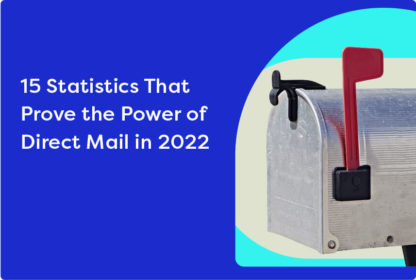Household postal addresses are about to become the ultimate game-changer in the world of data-driven marketing and identity resolution. So, grab your favorite beverage, lean back, and let’s delve into this fascinating transformation.
Google’s decision to bid adieu to third-party cookies in Chrome by 2024 sent shockwaves through the digital advertising industry. And while some may consider this the end of an era, we prefer to see it as an opportunity to revolutionize how we connect with audiences and gain deeper insights into consumer behavior.
There are several possible solutions and identifiers vying to replace third-party cookies when they’re gone, but there are several reasons to believe that household postal addresses are the ideal successor.
1. Stability That Stands the Test of Time
Unlike cookies that can vanish by clearing a browser’s cache or a simple browser switch, household postal addresses stand the test of time. The average American will only move about 11-12 times in their lifetime, making postal addresses a much more stable and reliable identifier than cookies, estimated to have a half-life of just 14 days. You can confidently maintain your connection with customers over extended periods when you have accurate and up-to-date addresses.
2. Old-School, Future-Proofed Identity
One of the greatest advantages that household postal addresses have is how long they’ve been an integral piece of the marketing data. After all, the first form of targeted, addressable marketing was direct mail, which means many brands already have a robust CRM filled with customers’ home addresses. And because household postal addresses are offline identifiers, there isn’t the risk of being made obsolete by a software update.
3. Ubiquitous and All-Encompassing
The beauty of household postal addresses is their omnipresence. They connect consumers across the entire digital and physical landscape and the customer journey. From registration to purchase, whether you’re operating in the brick-and-mortar space or the digital realm, postal addresses act as the golden thread that weaves together identities seamlessly. Translating to personalization, more efficient and precise targeting, and the ability to respect customer privacy choices across all touchpoints.
4. The Bridge Between Online and Offline Experiences
Data-driven marketers have long been challenged with bridging the gap between online and offline customer interactions. Postal addresses enable connections cookies never could. With a valid postal address, marketers can match online activities with offline purchases (in-store, over the phone, etc.) with near-deterministic certainty, enabling a holistic view of customer behavior. This kind of data is critical for optimizing and scaling campaigns and deriving insights into what drives performance beyond just online intent signals.
In Conclusion
As the sun sets on third-party cookies, we mustn’t mourn the loss but rather embrace the dawn of a new era. Household postal addresses have been waiting in the wings, ready to take center stage and revolutionize how marketers think about identity. With stability, longevity, ubiquity, and the ability to bridge the online-offline gap, postal addresses have the potential to enhance customer experiences while respecting privacy.



